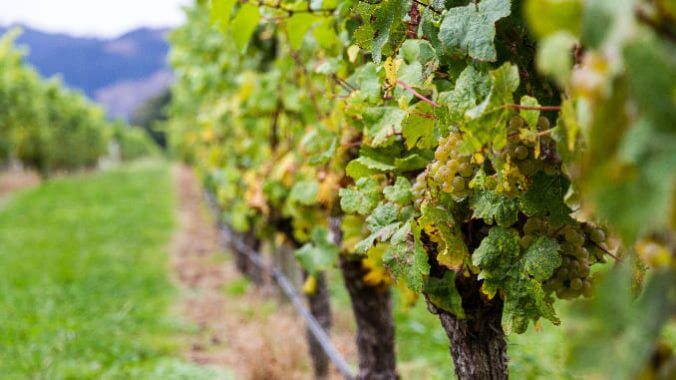Abruzzo’s Wine Landscape Is Prepping for a Premium Makeover
Photo by Kris Gerhard/Unsplash Drink Features wine
Around the late 20th and early 21st centuries, when the central Italian region of Abruzzo was celebrating the success of Montepulciano d’Abruzzo, one of the most exported DOC wines in Italy, some farsighted winegrowers realized the cultural importance of highlighting their native land and grapes. Instead of doubling down on the traditional Montepulciano grape variety that is responsible for Montepulciano d’Abruzzo, Riserva, Cerasuolo d’Abruzzo and more, they began planting Aleatico, Malvasia and Cococciola.
Moreover, with more young Italian consumers searching for more sustainable wines, wine producers saw the need to combine their appreciation for indigenous Abruzzese viticulture with organic practices to produce more wines that were healthier for the land.
As more wineries in the region experiment with grapes and winemaking practices that stray beyond the familiarity (and price!) of Montepulciano d’Abruzzo, the region deserves recognition as a new hotspot for unique, creative wines.
The Organic Revolution
Organic agriculture, a practice that eliminates the use of artificial chemical fertilizers, is alive and well in Abruzzo. From micro-plantations to the major estates, even producers that once held strong beliefs about conventional farming are swiftly shifting to organic and biodynamic winemaking. These local wineries—despite local market competition—are helping each other adopt a sustainable system to promote healthy harvests and qualify for the organic certification required to price in the premium category.
One of the pioneers of the movement, Rodrigo Redmont, runs Talamonti, a family-run estate in the village of Loreto Aprutino, which has been producing wines with a renewable certification since 2001. “We have seen a transforming generational change by winery owners, especially women, who are pushing for more opportunities and recognition for the region with greater sensitivity toward sustainable, organic and biodynamic productions,” Redmont said.
“As a winery, we have 100% renewable energy (wind and solar panel) and are now studying the possibility of recovering water to use in reservoirs to recover and grow biodiversity.”
Experimenting with Different Grapes & New Techniques
Abruzzo boasts many indigenous and international grape varieties, but until recently, commercial production concentrated on Montepulciano and Trebbiano. In the last decade, the growing demand for organic wines—made from cultivated grapes that don’t use synthetic fertilizers—is leading producers to work with native varieties that many in the past believed were not fit for quality wines.
There’s also a push in the region to produce higher-quality, premium wines. Cooperative-turned-upmarket wineries like Tenuta Arabona are producing wines that make use of rare local white grapes with distinctive, underrated personalities. Look for white Pecorino and Passerina, as well as Cerasuolo rosé made from Montepulciano grapes. Pecorino is a delicately pale grape with unique characteristics almost exclusively used to produce high-quality wines. Passerina, also known as Trebbiano di Teramo (after the Teramo hills in northern Abruzzo), boasts high acidity and is capable of longevity.
The estate-owned winery Torre Zambra is a recent success story, breaking the status quo with some ultra-premium whites, including its Passerina “Colle Maggio.” Torre Zambra’s mission is to revive heirloom cultivars—native cultivated varieties of plants that are passed down from one generation to the other. Exploring the longevity of Passerina grapes and grapevines, which can range between 20 to 25 years, the Colle Maggio vineyards can produce complex and fragrant whites, helping to bump Abruzzo’s white wine economy to the top shelf.
Abruzzo is undoubtedly an oenophile destination for those who want to expand their appreciation for Italian wine beyond Veneto and Tuscany. The ongoing effort to bring more wine tourism to the region and access to the mountainous, backcountry charm has upped the ante. It’s perhaps more rewarding than ever for people to detour to the east of Rome to drink Abruzzese wine, to taste the old and new and maybe catch a glimpse of the aspirational vision afoot.